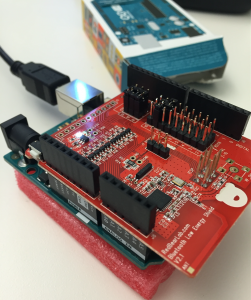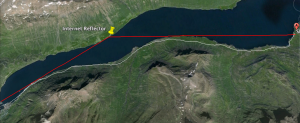This week I am getting acquainted with Arduino. I started with this basic guide – ‘install software, plug in board, make it do a thing with a sketch in Arduino. I played around with some other sketches and basic searches. When I had success with that I moved on to connecting the BLE shield to the arduino uno and getting it to work. I followed these simple instructions to setting up the RedBear Labs libraries and getting the shield to talk to the stock android tablet available through the app store.
Next I will be trying to get the IR light sensor to work with the BLE shield. I will need to decide sampling frequency as well as how to transport data packets to ‘Field Day’.


